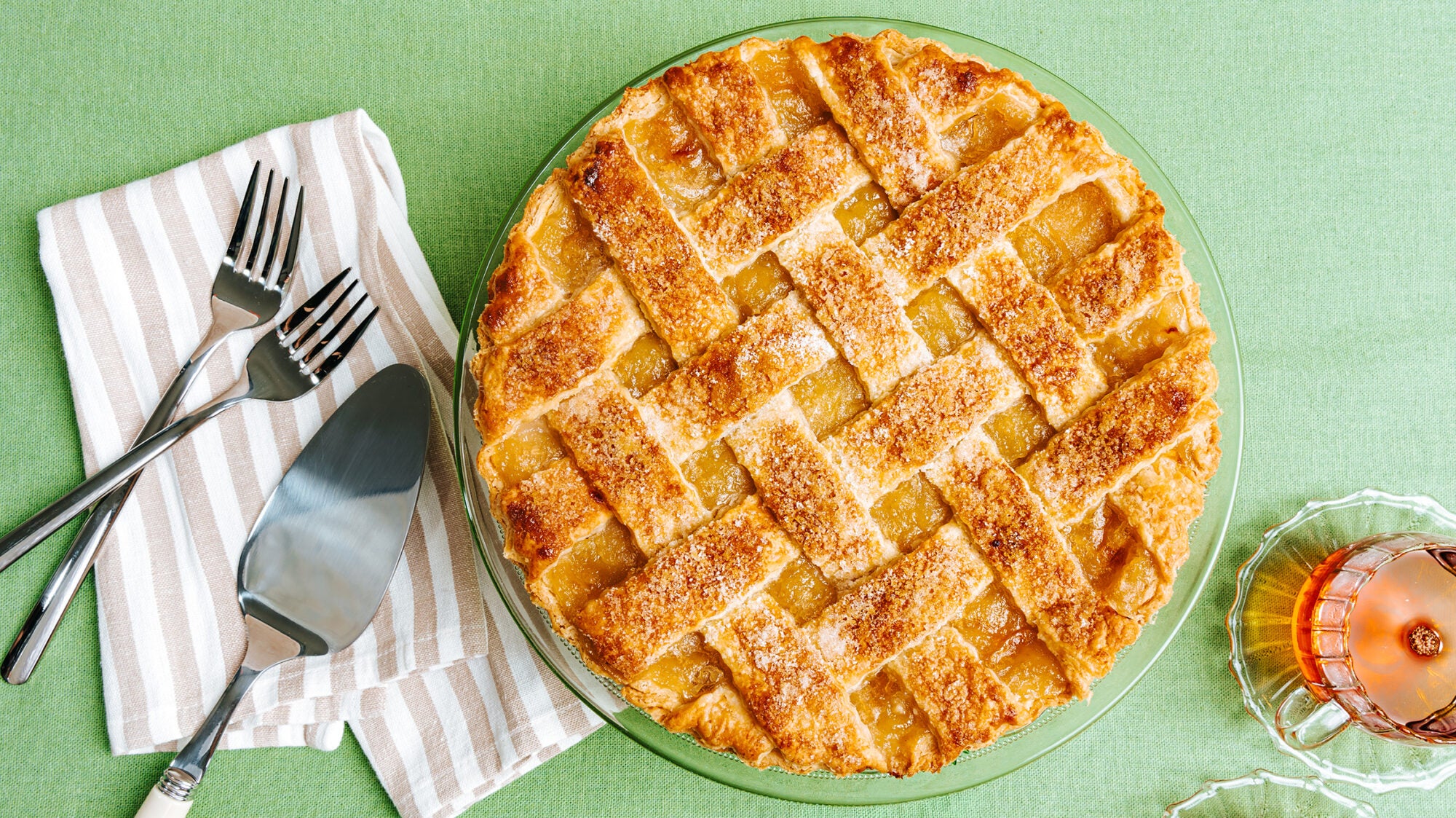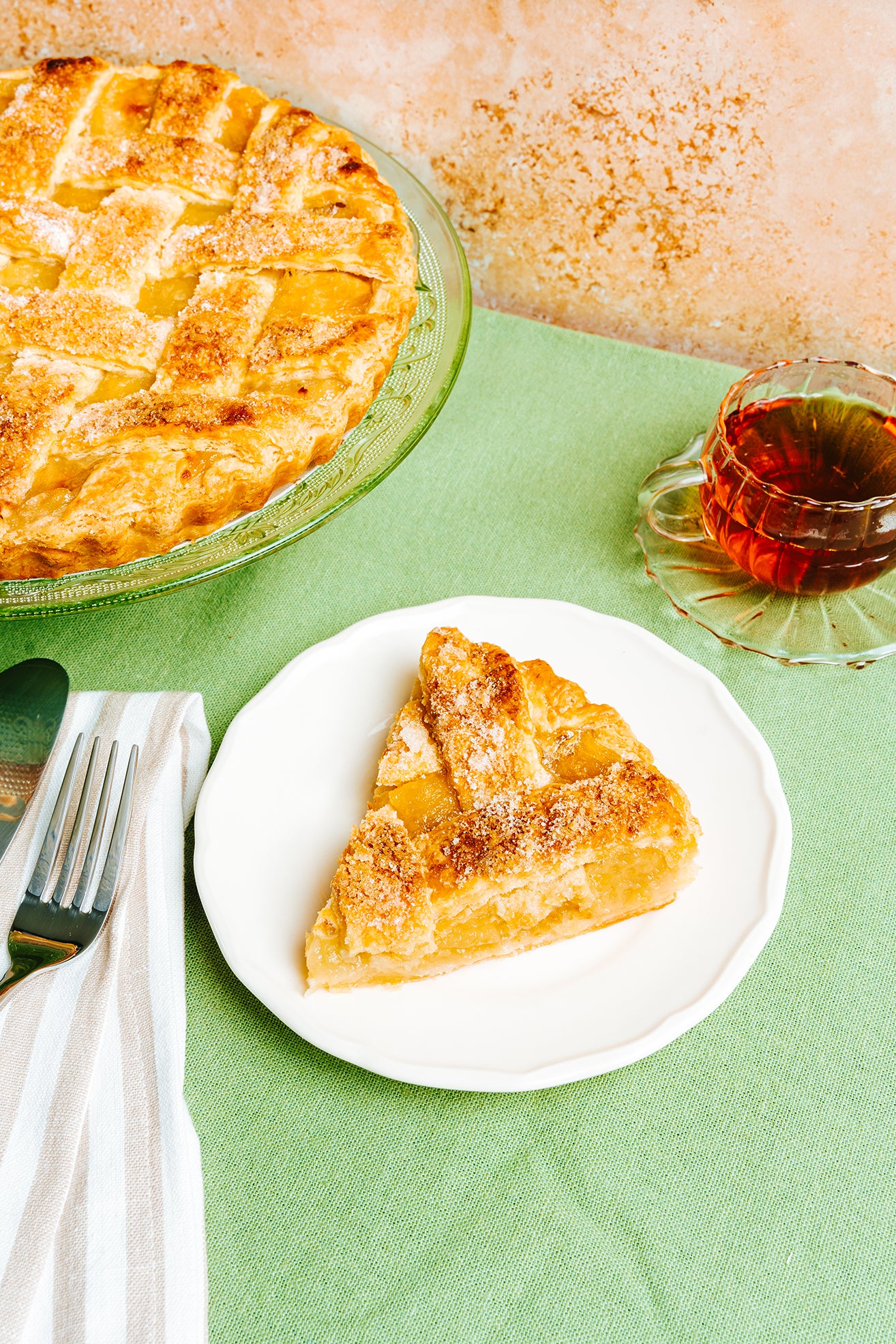
The best apple pie skips the cinnamon and takes a cue from Italy.
Apple pie was one of the first things I ever learned to bake. My great-grandmother gave me my first pie lesson when I was seven—a rite of passage in my family. So it comes as no surprise that I have firm opinions when it comes to this classic dessert. When I began working as a pastry chef in an Italian restaurant, I was handed a recipe for an apple crostata on my first day. The recipe included a pasta frolla, or an Italian sweet dough similar to a French pâte sucrée. The apples were cooked down to a smooth compote, flavored with brandy, and finished with butter for a velvety texture—no cinnamon or nutmeg in sight. This was in complete contrast to the all-American way I had been taught to make apple pie, yet it took only one bite to convince me that the Italians were onto something.
While I still enjoy a good old-fashioned apple pie, these days, my favorite apple dessert combines the version from my childhood with various tricks I’ve picked up over the course of my career. This recipe features a classic, flaky pie crust—but nestled into a tart pan rather than a pie pan, for the optimal crust-to-filling ratio (I’m a crust lover). The filling takes cues from the Italian apple crostata I made as a pastry chef, scented with brandy and vanilla rather than with cinnamon.
While most apple pies are assembled with raw fruit, this crostata’s filling is precooked on the stove. First, half of the apples are cooked down until they’re almost completely smooth. The remaining apple slices are added later and cooked only briefly so that they retain their shape as well as some bite—Granny Smith apples are best here, as they’ll remain a bit al dente and won’t turn to mush as quickly as other varieties. Precooking the filling not only allows for a unique mix of textures but also prevents the mixture from shrinking dramatically in the oven and creating the dreaded gap that can form between crust and filling.

While there’s certainly a time and place for a classic sweet tart dough, for this dessert, I opt for a straightforward, slightly salty American-style pie dough, but with one substitution: I swap the usual water for whole milk. After a little experimenting, I’ve found that the extra fat in milk makes for a tender crust that’s easy to work with. It’s not quite as delicate as your average pie dough, which is helpful for negotiating it into a tart pan and then later removing the tart from the pan once it’s baked.
This tart is an amalgamation of everything I love about apple desserts, taking cues from American- and European-style pastry, with its flaky pie crust and Italian-inspired filling. For a French spin, try using calvados in place of regular brandy—the apple-derived spirit comes from Normandy and often finds its way into the classic tarte Normande aux pommes. It’s not the apple pie I grew up on, but it’s certainly one I’ll be making for years to come.